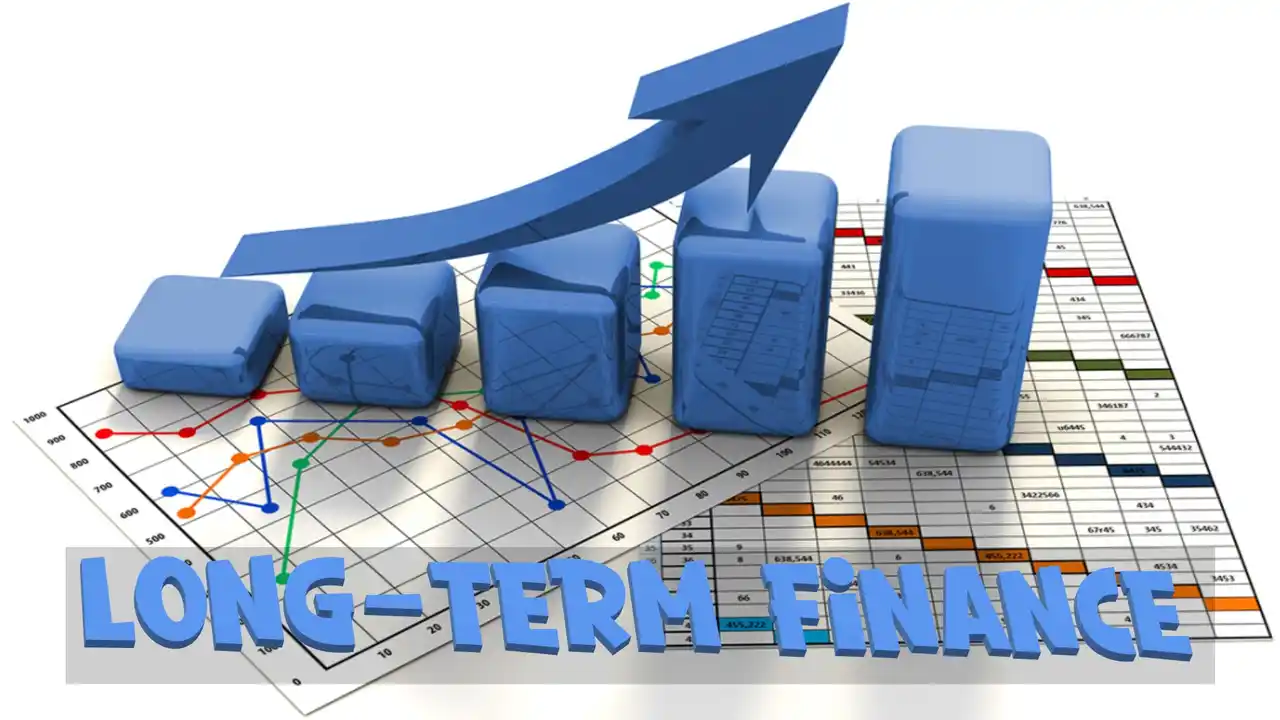Bill might fill out an application for a loan for his business. Commercial loans are loans from a bank that Bill or his company promises to pay back in full, along with interest. There are two types of commercial loans: secured and unsecured. Bill got a “secured loan,” which means he put up assets that the bank can take and sell if he doesn’t pay back the loan. When someone gives you an unsecured loan, you don’t have to pay it back. Getting a commercial loan isn’t always easy because banks don’t like to give money to small businesses that don’t have a strong track record or a lot of assets. Read on to discover everything there is to know about long term finance and to become a subject matter expert on it.
Long-term loans mostly fix interest rates. If interest rates go up, a company whose balance sheet is mostly made up of fixed-rate, long-term debt may be better able to handle financial risk. We have already stated that this approach would grant the company additional time to repay the loan and provide transparency regarding the financing expenses throughout the investment’s duration. Large insurance companies and other institutional investors commonly provide long-term funding because they have stable capital structures and know the terms of their loans. To learn more about financial risk management, read this article.
Long Term Finance Definition
Long-term financing means getting money through a loan or borrowing for more than a year, such as through the sale of stock shares, debt financing, long-term loans, leases, or bonds. It is a common thing to do when trying to get money for a big project or to grow a business. It’s not uncommon for this kind of long-term funding to be quite large.
Long-term financing means borrowing money with the plan to pay it back after more than a year. A variety of ways have helped the company to obtain funds for its long-term capital. In these situations, there is no need to pay back. Long-term financing comes in the form of mortgages with terms of 20 years and Treasury bills with terms of 10 years. Long-term financing typically funds capital projects and expands operations in most cases. Most of the time, these funds go to projects that are more likely to make money in the future.
Examples of Long Term Finance
LeapFrog Investments put 300 crores ($43 million) in an NBFC called NeoGrowth Credit Pvt. Ltd. using private equity strategies.
Around two decades back, Amazon went public for the first time and raised $54 million to meet its long-term financial obligations. Apple sells bonds to get $6.5 billion in financing through debt. Paytm wants to get between $10 billion and $12 billion by giving Warren Buffet a controlling stake in the company.
In recent years, car loans have become much more important. Since getting car loans from banks has become easier, more people are getting them. Even though both are luxury purchases, the interest rates on auto loans are higher than those on mortgages. Banks have cut their interest rates on auto loans because there is more competition from other lenders. The average length of a car loan is seven years. If you pay off your car loan early, many banks will charge you extra fees. But some banks do not charge extra fees to people who pay off their car loans early.
How Does Long Term Finance Works?
Banks, credit unions, and online lenders can provide a one-time loan known as a cash advance. The lender gives you the money, which you have to pay back with interest over months or years. Interest rates, which can change or stay the same, are often lower than those for other types of loans.
Long-term business loans let businesses of any size spread out their borrowing and interest payments over a time period that fits their cash flow and growth plans. If your business is accepted, the money will be put into a bank account, just like a regular loan.
Benefits of Long Term Finance
Most long-term loans have terms between one year and thirty years. Businesses that are short on cash can get long-term loans. This type of financing may be needed for growth projects, the purchase of fixed assets, the development of new products, R&D, mergers and acquisitions, and other things. Most of the time, these kinds of projects use complicated ways to get money.
Stability
If a business needs to pay off its debt, it is better to get long-term financing than a series of short-term loans. Long-term loans that don’t have to pay back right away give borrowers more freedom to plan and predict their spending.
Investing is Safer when Risks are Spread out
Long-term financing makes it easier to change and find resources to meet different capital needs. It also makes it less important to rely on a single source of funding. Also, this practise lets businesses put off paying their debts.
Flexibility
Long-term debt financing options like mortgages, leases, reverse mortgages, and loan refinancing are available to borrowers, and they can be made to fit their needs. So, you’ll have more freedom with how you spend your money. For example, a lease is a type of long-term debt financing that lets the lessor use an asset in exchange for rental payments, even though the lessor doesn’t own the asset.
Has to do with how Well the Business Works
Long-term debt financing use for long term finance, while short-term loans are use to get cash right away to deal with cash flow problems. Capital investments can help a business grow and expand, such as real estate, machinery, vehicles, furniture, and leases.
Frequently Asked Questions
How can a Business Get Financing for a Long Time?
Most businesses that are growing invest their profits or use debt or equity financing to grow. Large and medium-sized businesses that need long-term funding can also get money from bond markets.
Does it Cost a Lot to Get a Long-term Loan?
Long-term financing typically utilizes credit terms exceeding two years in duration. Long-term loans may feel safer despite higher interest rates than short-term loans.
If a Business Takes on too Much Long-term Debt, what Happens?
Over-leveraged businesses that have borrowed too much money may fail if the market crashes. As a business owner, taking on more debt may hurt your bottom line in the long run.
Conclusion
Long-term financing is often called “patient” because it lasts for a long time (5-25 years or more). Consider long-term financing for extending or combining refinancing commitments beyond the normal bank time frame. Longer maturity may benefit companies for buying out a shareholder or investing in assets, projects, or acquisitions by delaying, limiting, or stopping amortization. Continue reading to become an expert on long term finance and learn everything you should know about it.







